Henry Ford began building cars in Great Britain all the way back in 1911, when the first Model Ts came off the line in Manchester. By the 1930s, Ford Britain was assembling models designed just for the European market, leading to something of a parallel Blue Oval universe across the Atlantic. After World War II, left-hand-drive versions of some British Fords were sold in the United States — not many compared to the millions of U.S.-built Fords produced, but Americans bought a few thousand new Anglias, Prefects, Consuls and Zephyrs every year during the 1950s. The Zephyr and its derivatives were the swankiest British Ford models from 1950 through 1971, and they were available here from the 1952 through 1964 model years. Here’s one of those Zephyrs, found in a Denver self-service car graveyard recently.
European-built Fords became more mainstream here in the 1970s, with the Capri and Fiesta selling in respectable numbers during that decade. During the 1980s, Ford took a shot at selling Americans the Sierra as the Merkur XR4Ti and the Scorpio at the same Merkur dealerships. The Pinto-replacing Ford Escort that we got here starting in the 1981 model year is related to its European counterpart, though the two are more first cousins than siblings.
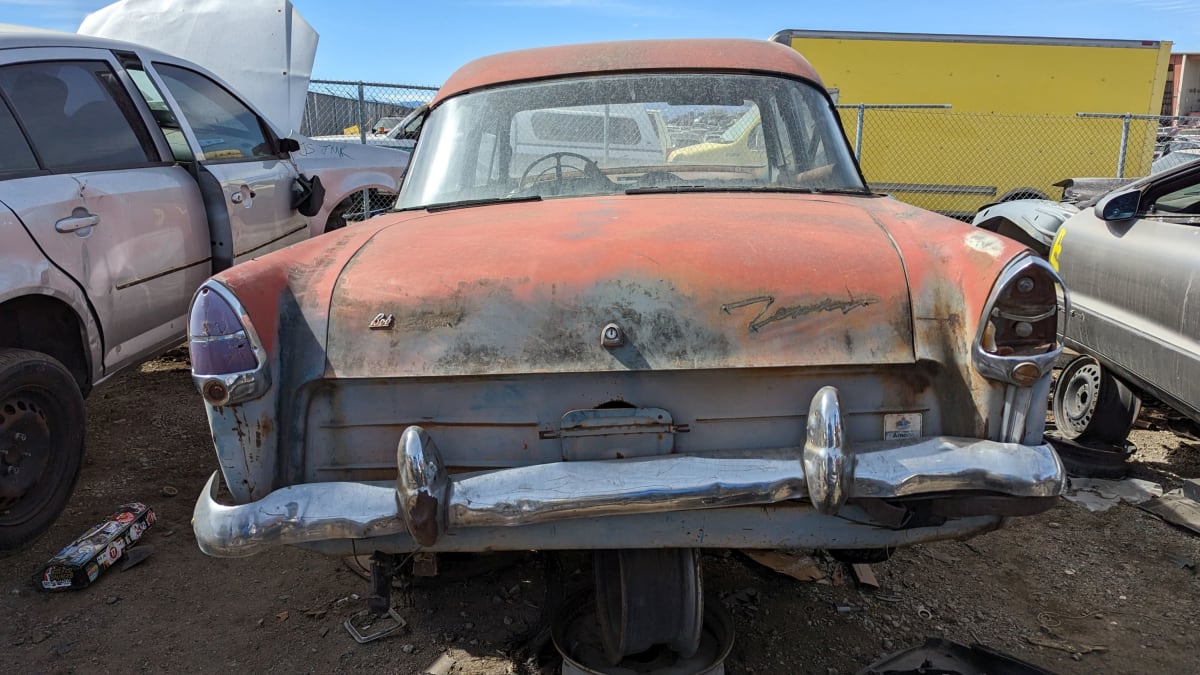
That said, pre-Capri European Fords have been extremely rare finds in American boneyards for many decades. This is the first one I’ve seen since the 1968 Cortina I documented in a Northern California yard a few years back.

1956 was the first model year for the restyled Zephyr Mark II and its Detroit-influenced lines. That year, Americans could still buy the dowdier-looking Zephyr Mark I alongside the Mark II. The Mark I saloon listed at $1,899 ($23,317 in 2023 dollars), while the Mark II saloon cost $2,149 ($24,123 today).
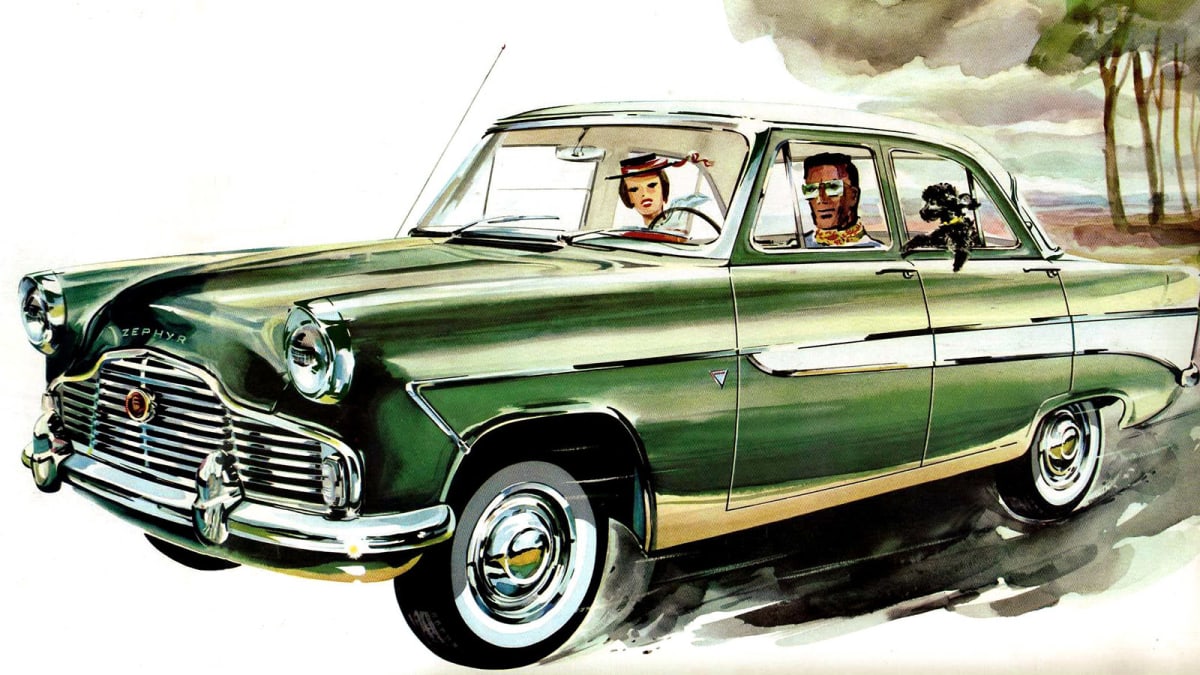
The Mark II weighed about 2,600 pounds, making it about 500 pounds lighter than a Michigan-built 1956 Mainline Fordor sedan. In mid-1950s Britain, where times remained tough after the war and food rationing continued all the way through 1954, the Zephyr was considered a status symbol.
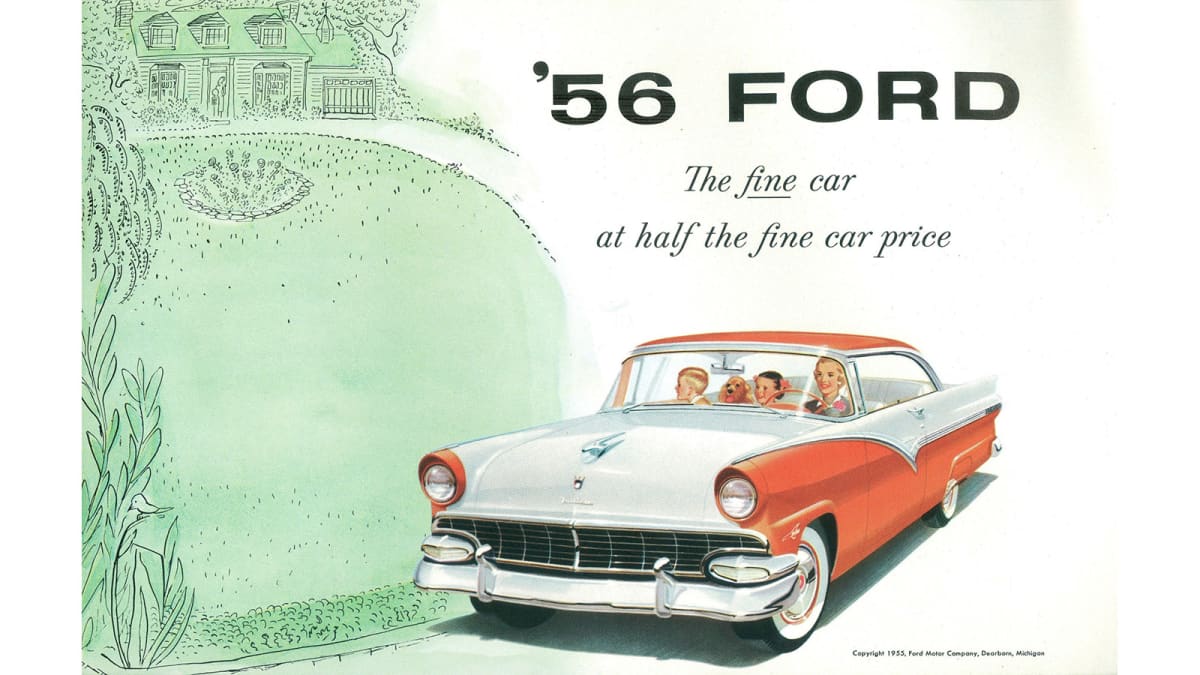
With the facilities of much of the overseas competition bombed to rubble just over a decade before and smaller American competitors being squeezed tighter with each passing year, Ford in the United States was flying high in 1956. Ford sold nearly 1.4 million new Mainlines, Customlines, Fairlanes and wagons in the United States that year. A shiny new ’56 Customline Fordor sedan with 137-horse straight-six engine had an MSRP of $1,985 (about $22,282 now), $164 cheaper than the smaller, quirkier (and more fuel-efficient) Zephyr Mark II.
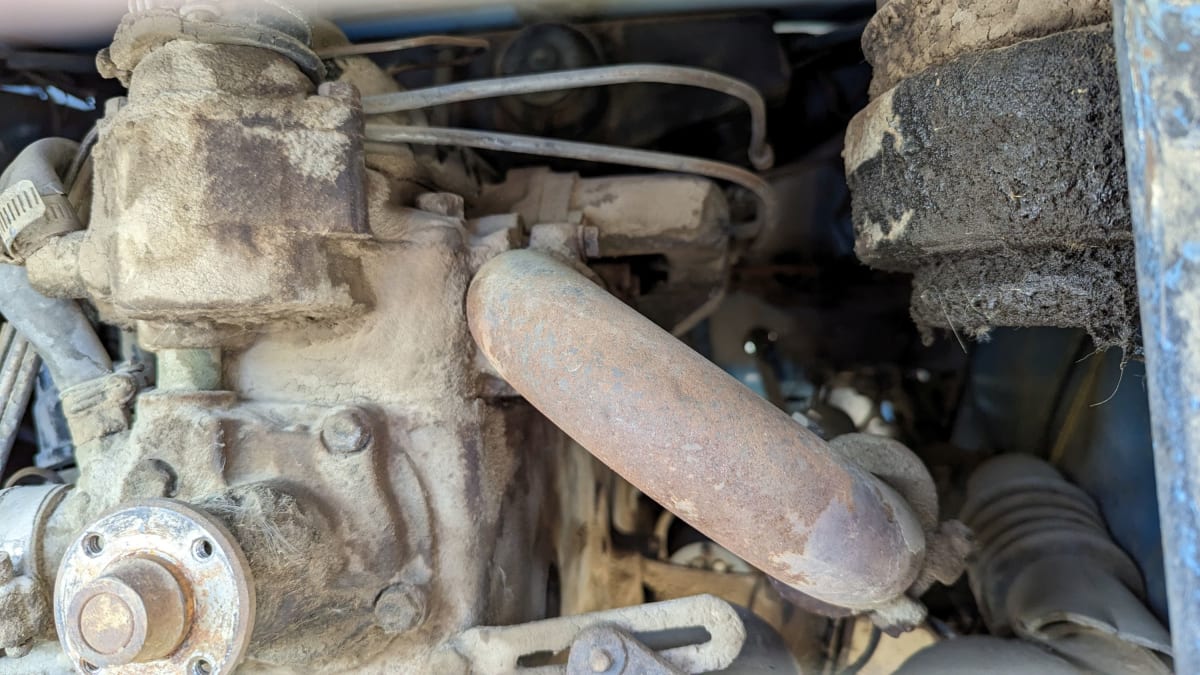
The Zephyr had a pushrod straight-six engine, too (which I was forced to photograph through the grille due to the hood latch mechanism being completely jammed). This is a 2.6-liter rated at 86 horsepower.
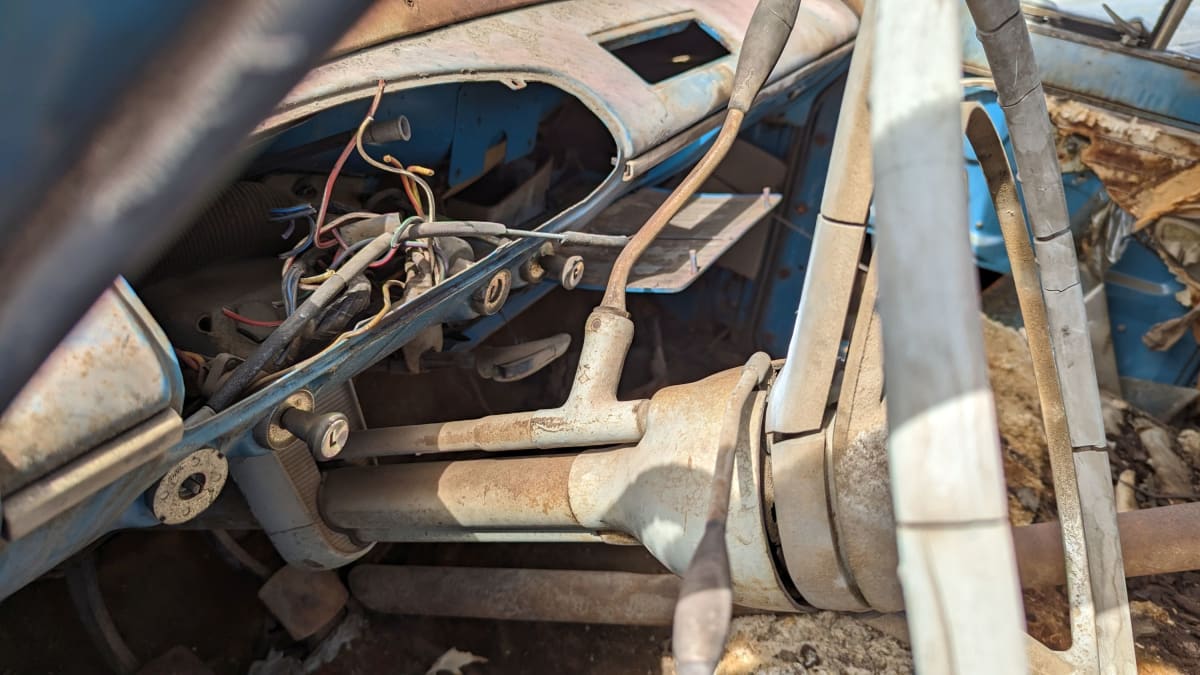
Americans would have found the transmission setup in this car comfortingly familiar, since it’s a good old three-on-the-tree column-shift manual.
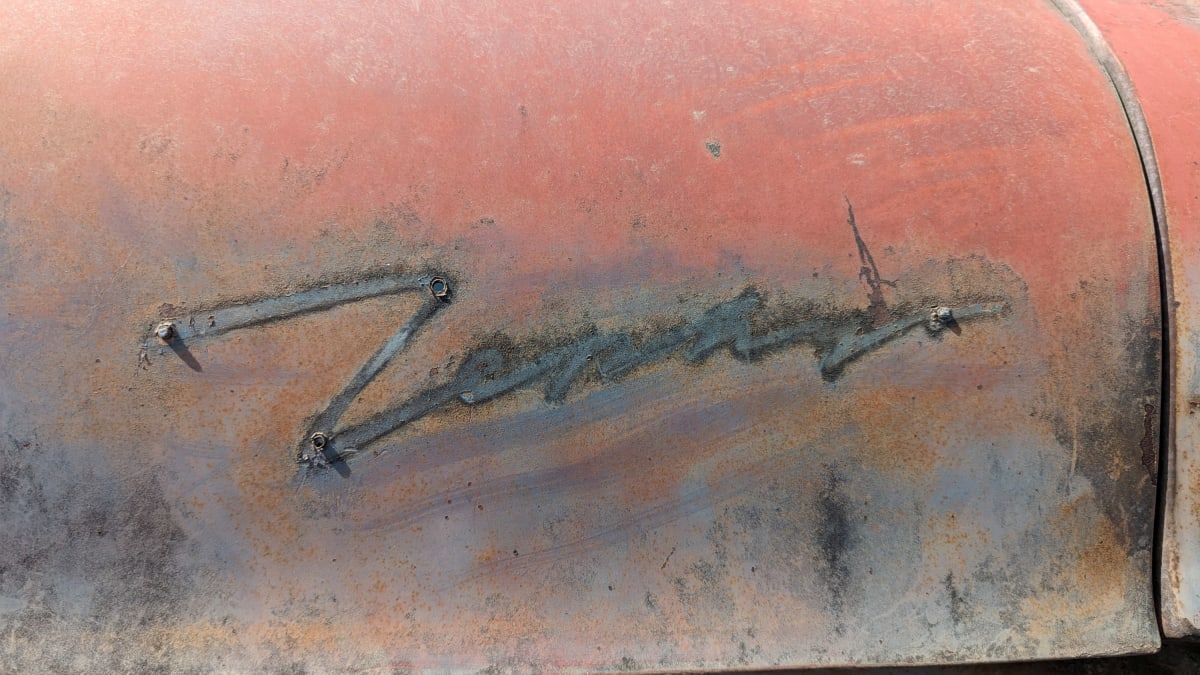
The Zephyr name has an important place in Ford history. Lincoln first used the Zephyr name from 1936 through 1942, then revived it as the name for the first model year of the car that became the MKZ.
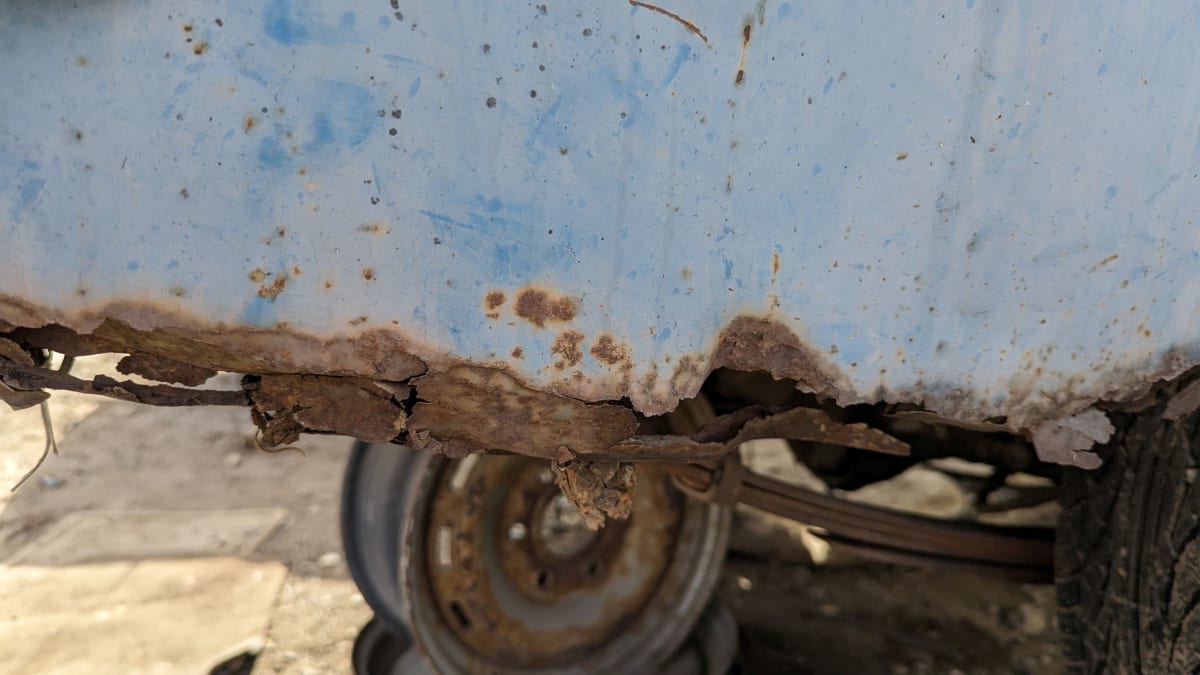
There’s some rust down low, probably from sitting in deep snow every winter.
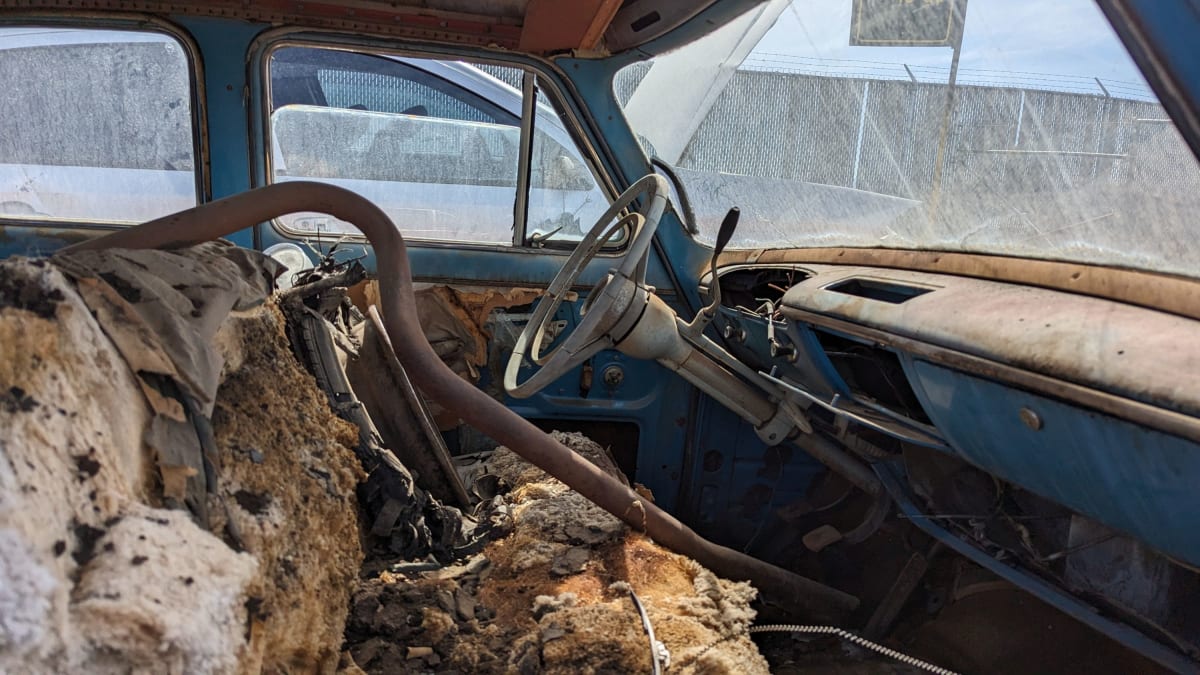
The interior is completely destroyed by the High Plains sun.
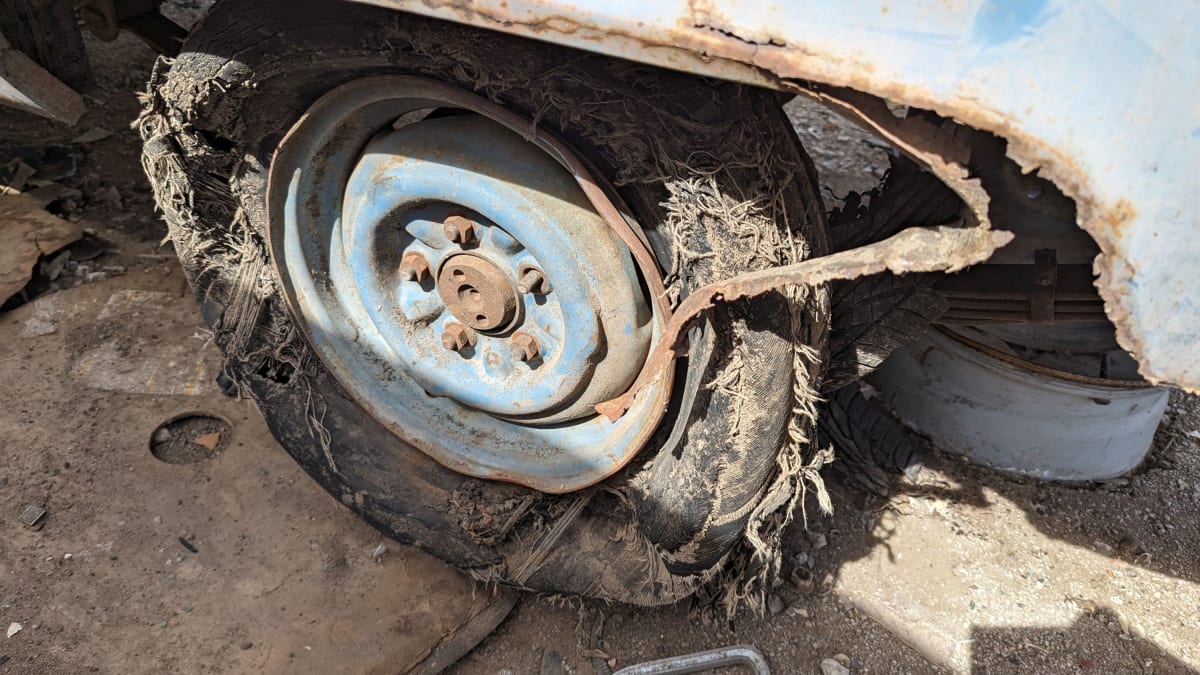
The condition of the tires suggests outdoor storage of at least a few decades.
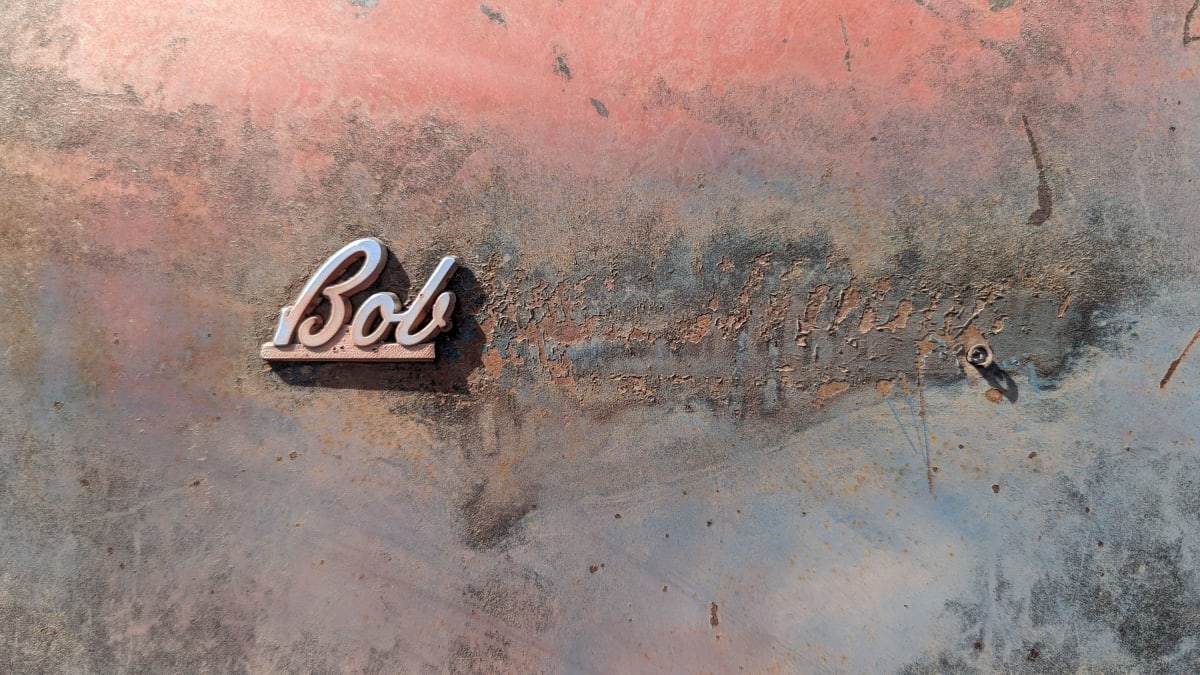
Still, there are many good parts remaining on this car. Perhaps some Zephyr restorer will rescue them.
I’m skeptical about claims of this car getting 32 mpg.
One of the “Three Graces” from Dagenham that year.
